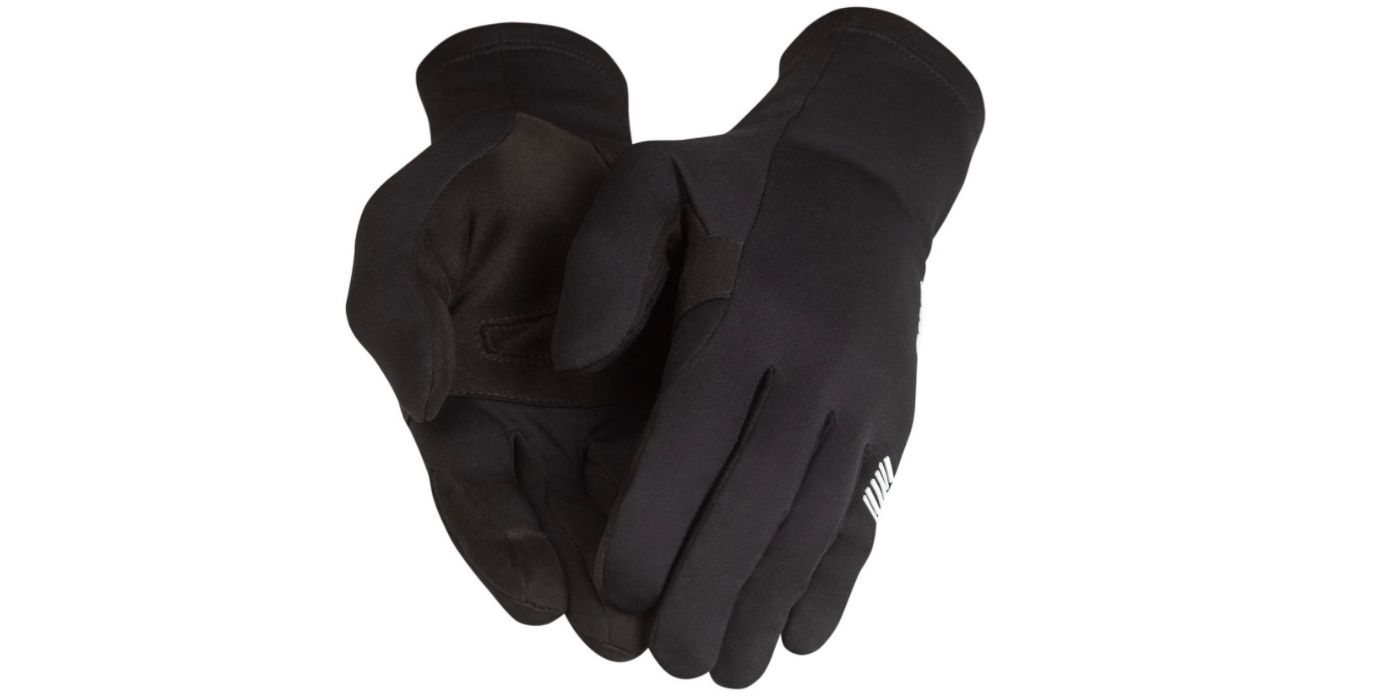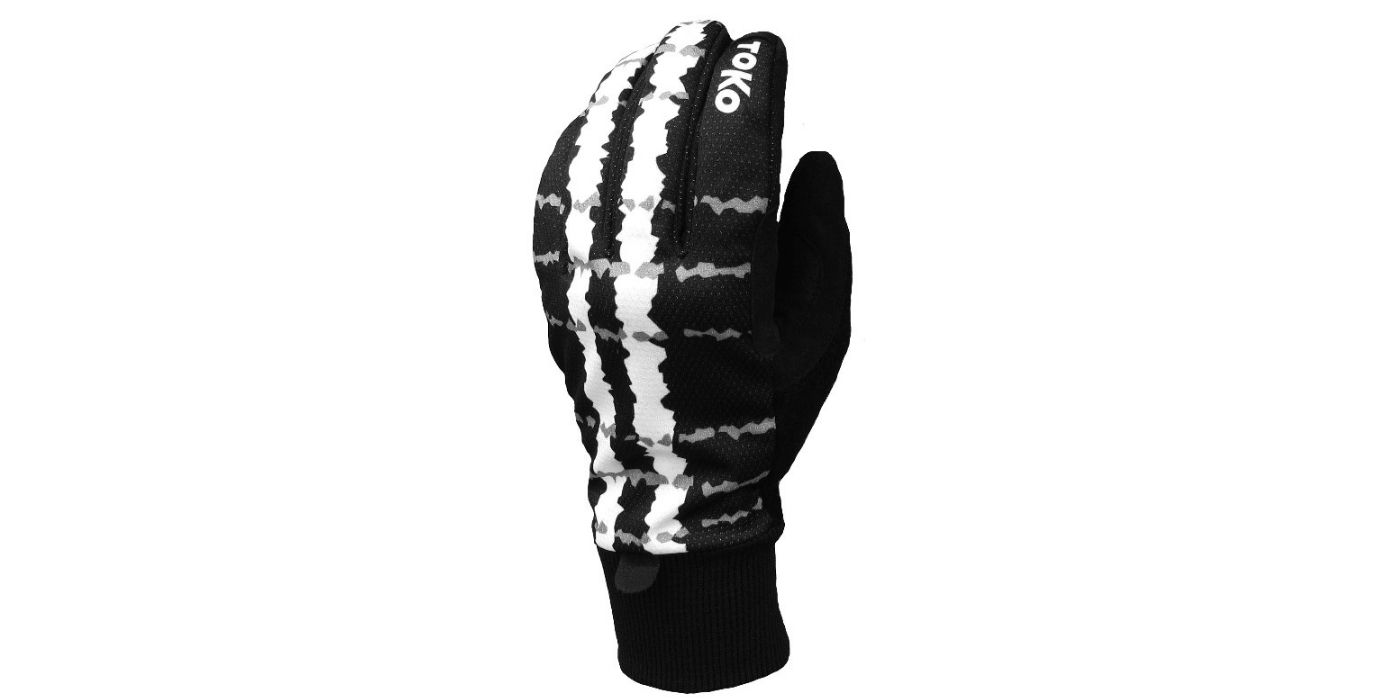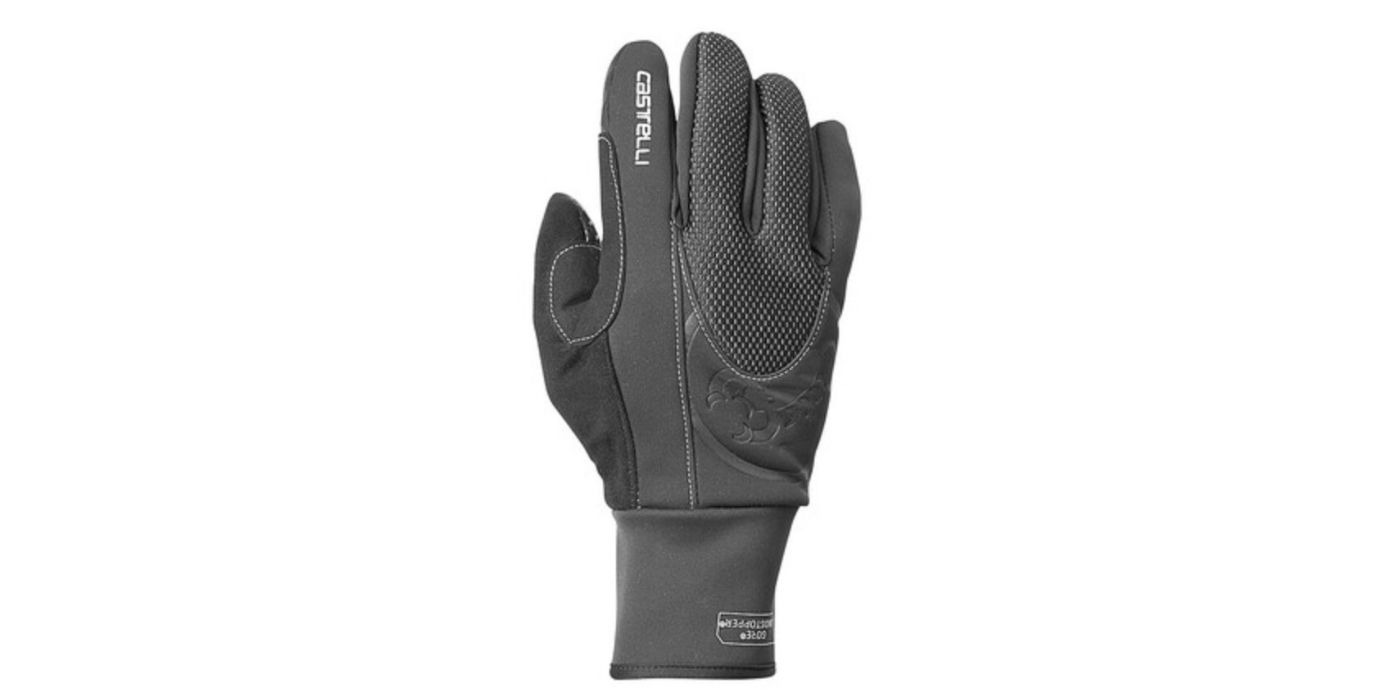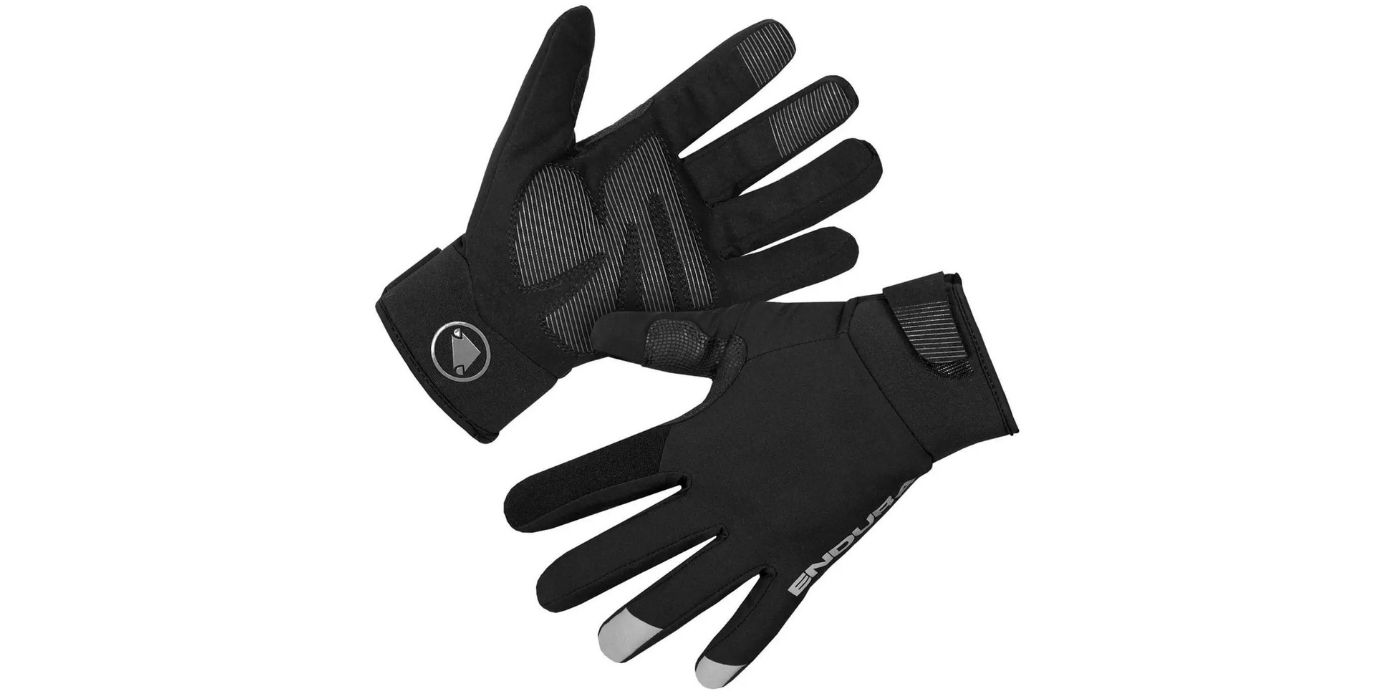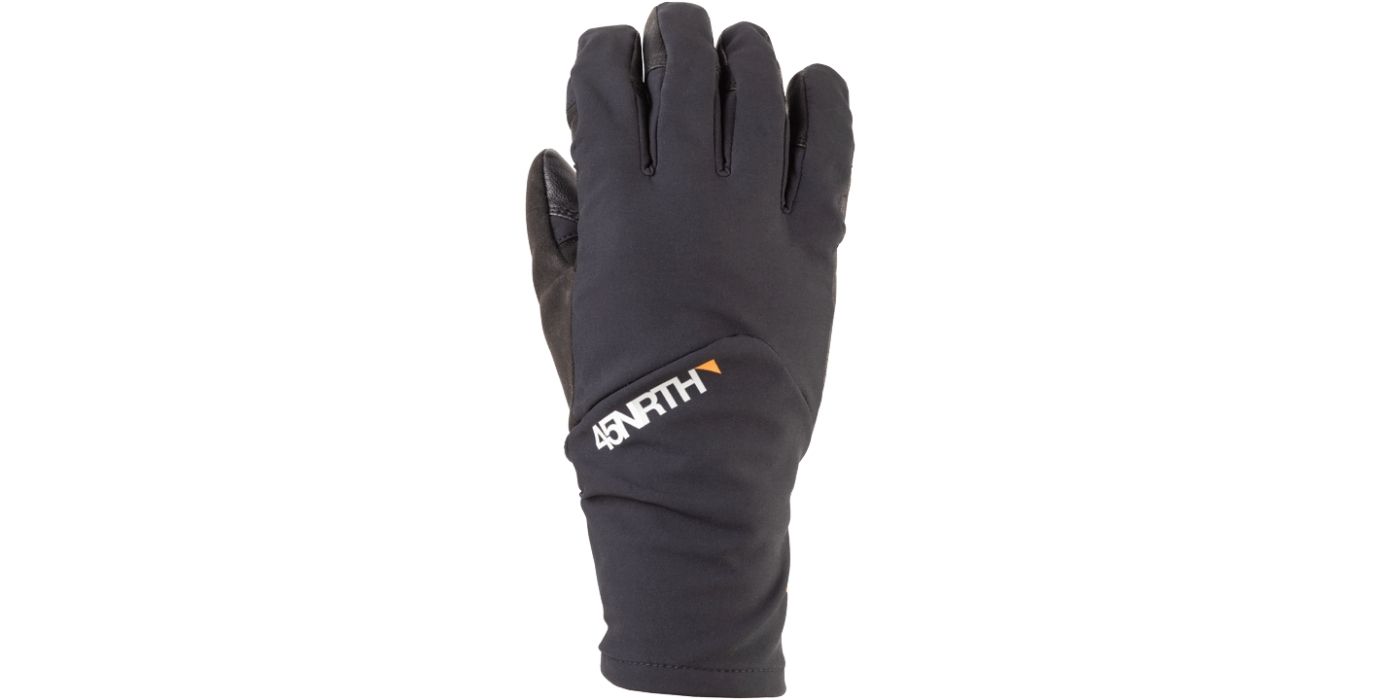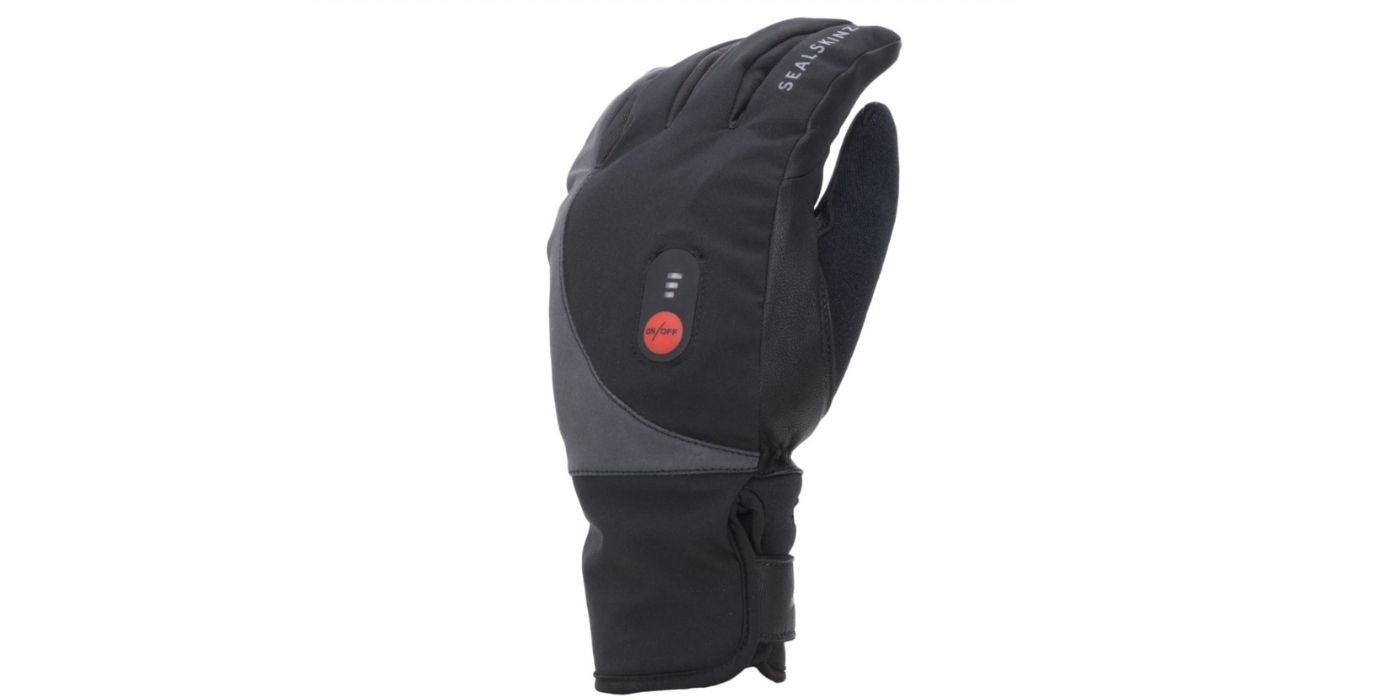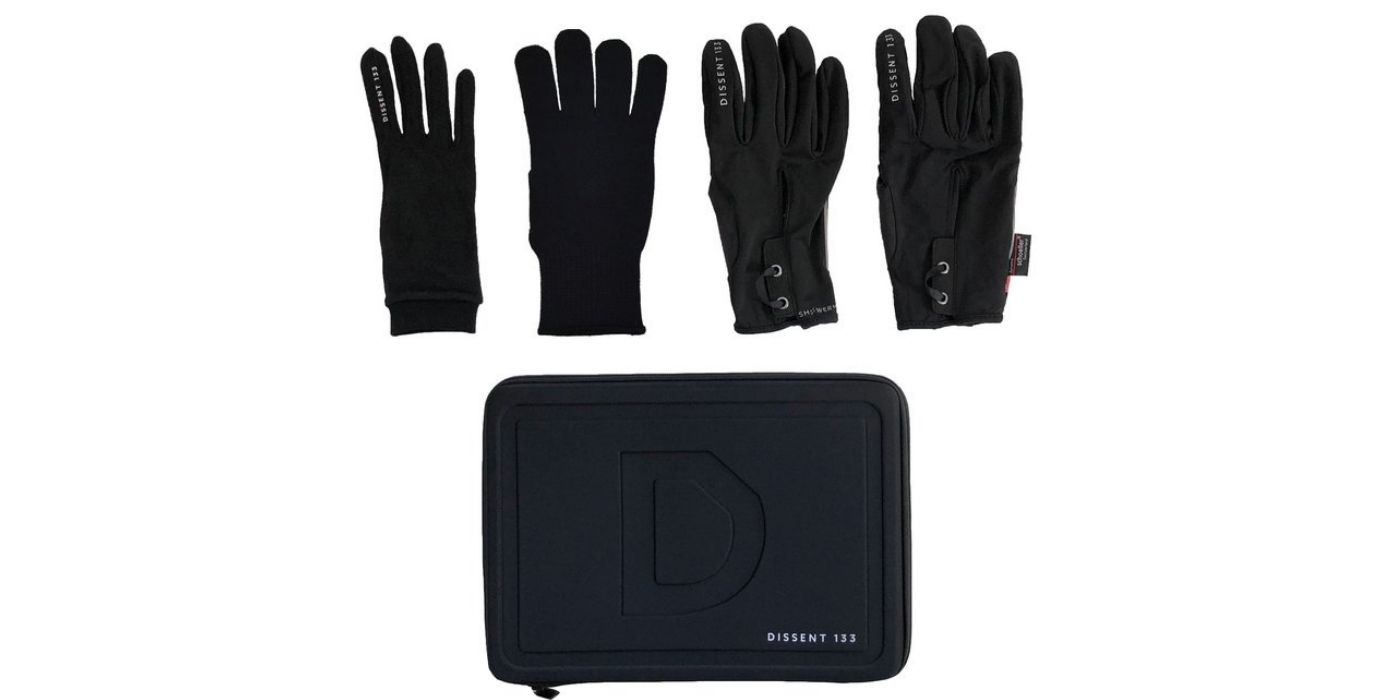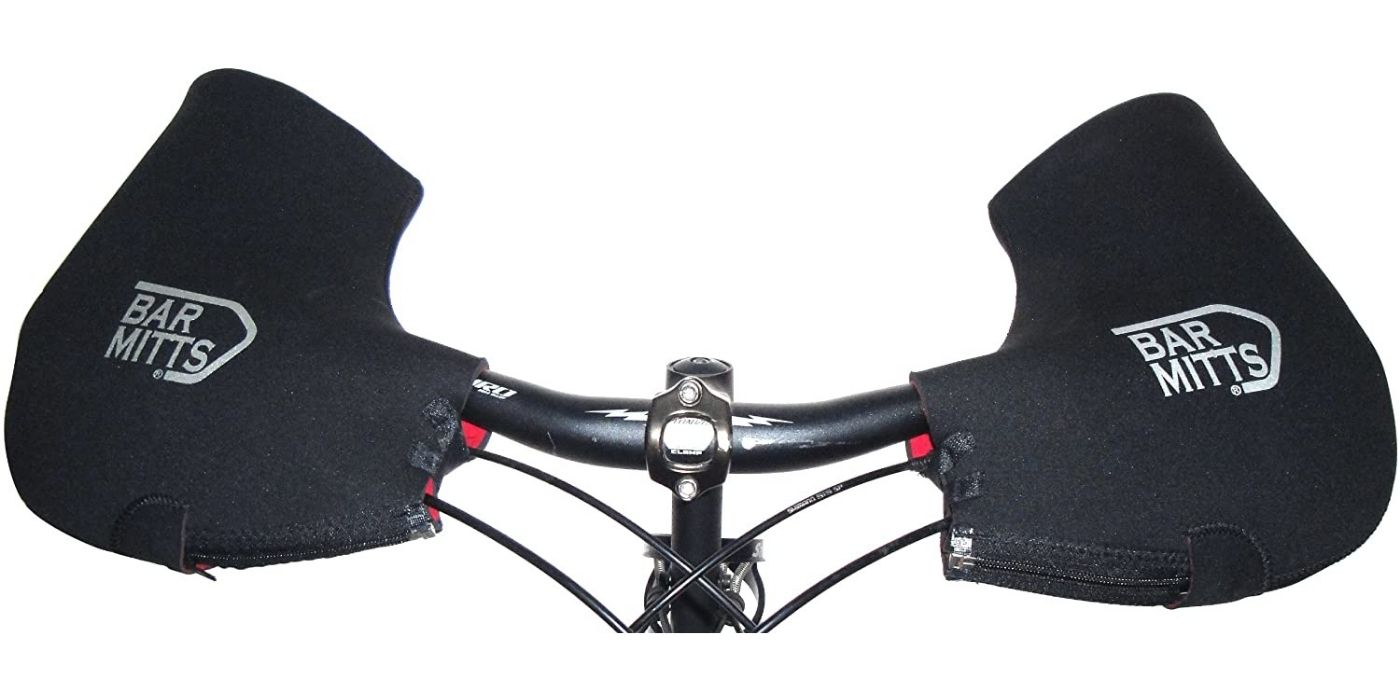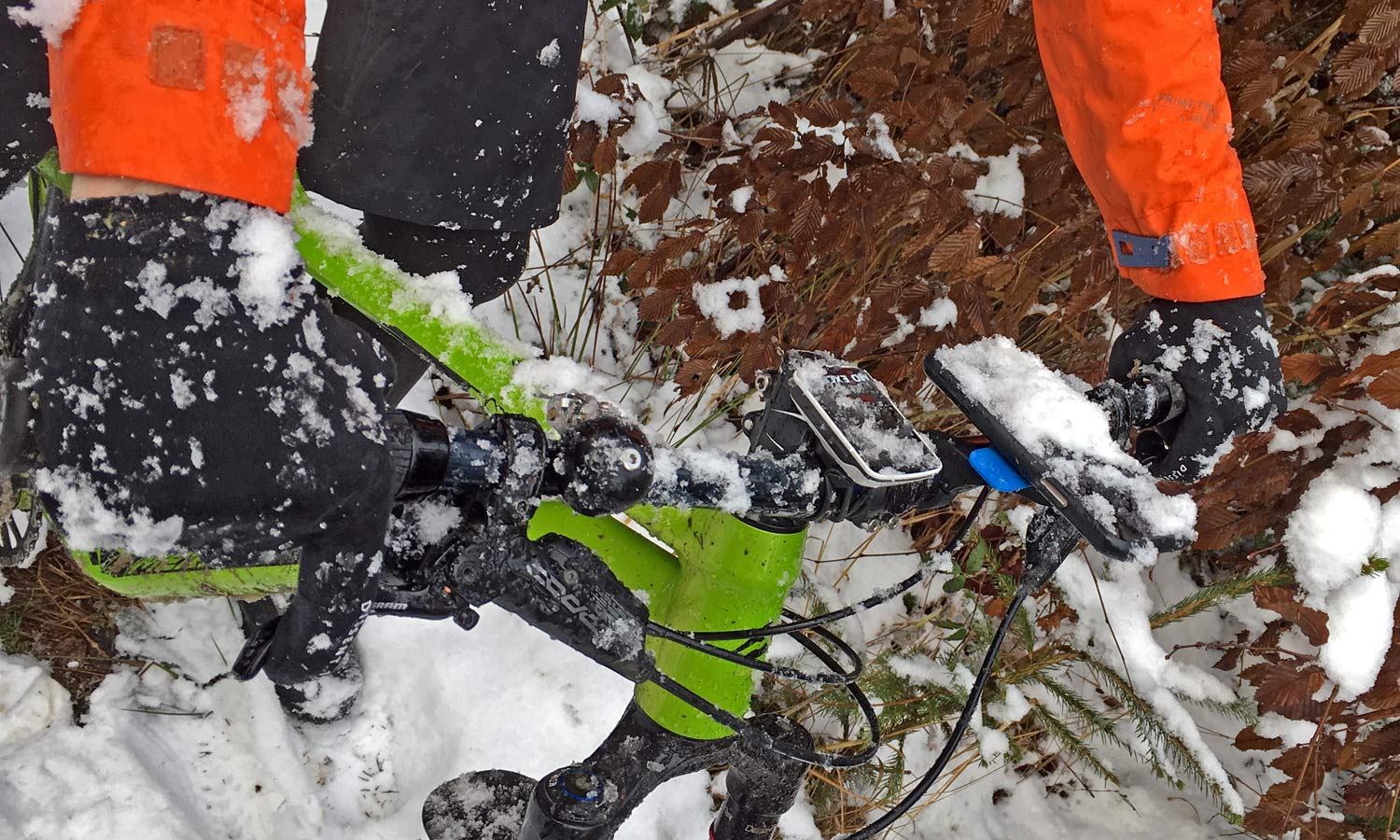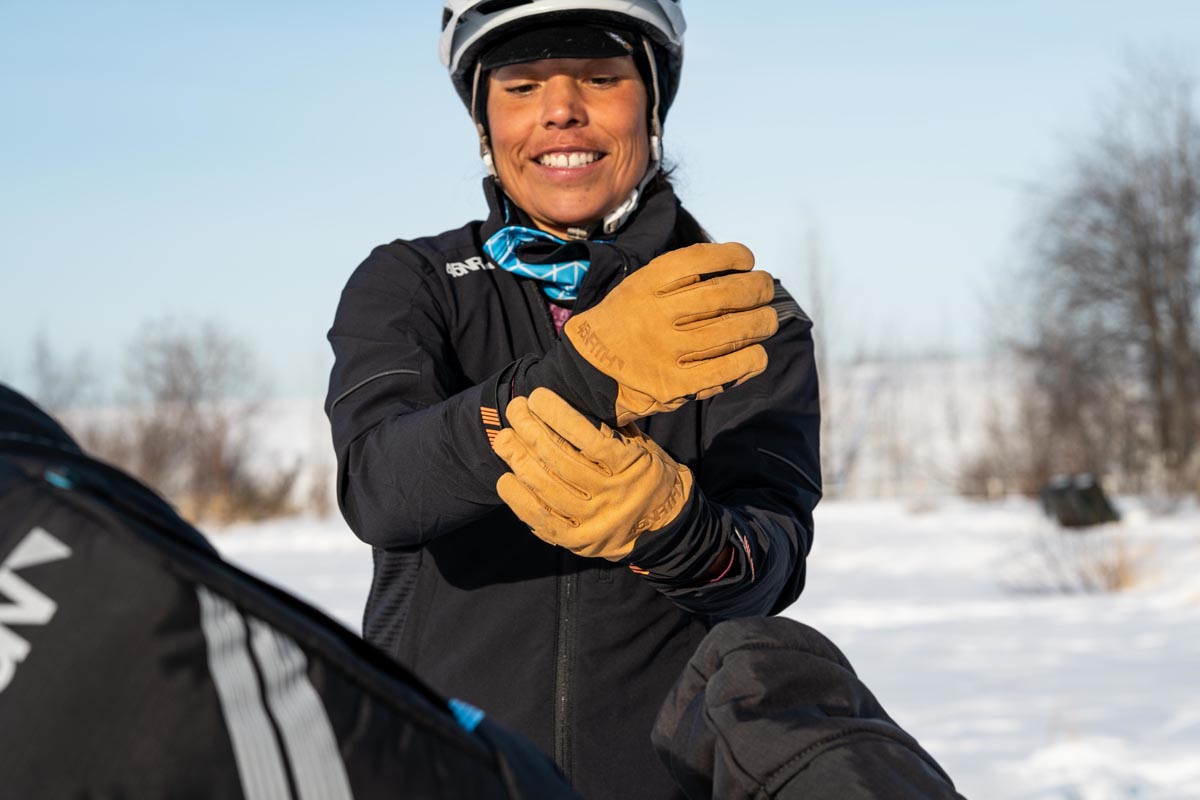As temperatures drop, cyclists start adding layer after layer to stay warm while pedaling, and keeping your fingers and hands warm with the right pair of gloves is a huge part of that equation.
Whether your winters are mild enough for shorts, or you’re fat biking as icicles form on your eyelashes, gloves are a key part of a good cold weather kit. And not all winter cycling gloves are created equal! Here, we’re sharing our top picks — and some diehard winter rider favorites — that keep us pedaling no matter what the weather.
A quick note about our breakdown: Because there are all kinds of definitions of “cold-weather” riding, we’ve broken this list into three unscientific categories:
- Light Winter – 35-45ºF range with maybe a bit of rain
- Medium Winter – 25-35ºF range with a mix of snow or rain
- Deep Winter – Regularly below freezing with plenty of precipitation
You’ll find recommendations for both dry and wet cold-weather conditions as well. (And head to the frequently asked questions sections for a few tips and tricks to make gloves more effective!)
Light Winter
GORE-TEX INFINIUM Stretch Gloves
These GORE-TEX gloves are, as one editor put it, really wonderful for moderate-temperature winters. They can go from winter cycling in just-above-freezing temps to cross-country skiing and running in even chillier conditions, and they’re incredibly easy to handle with — no shifting or braking issues here. Because they employ GORE’s WINDSTOPPER material as well, they’re great for dealing with wind and a bit of rain, while still staying breathable in case the sun comes out and temps rise.
- Style: Full fingers
- Material: GORE-TEX INFINIUM fabric with GORE WINDSTOPPER
- Good for: Wind
- Color: Black, hi-vis
- Sizes: XS-XXXL
- MSRP: $45
PROS: Great dexterity for shifting & braking
CONS: No grippy material on the palm, so works best with grippier bar tape or MTB grips
DeFeet Duraglove ET
We like the DeFeet Duraglove ET for early winter/warmer winter climates that range from 40-60°F. They’re the perfect ‘throw in your gear bag as a backup pair of gloves, and super for working on your bike in the garage as well. Despite the utter simplicity of these gloves, they still have one of our most key features: They’re smartphone compatible, so you can actually text without freezing your fingers. Check the size chart though; you may want to go one size down in these as the fingers are quite long.
The soft nylon/merino wool blend is super comfortable and makes them great on or off the bike, but they’re a bit stretchier than others here, so it may feel like your hands are slightly shifting inside them if you’re getting aggressive on the handlebars. Fortunately, raised grippy details all across the palm and fingers help keep your hands on the bars.
- Style: Full fingers
- Material: 52% nylon, 40% merino wool, 7% Lycra, 1% silver Ag
- Good for: Cold
- Color: Black
- Sizes: XS-XL
- MSRP: $30
PROS: Great price, perfect for casual off-the-bike use, long cuffs prevent air gaps
CONS: Not water-resistant, less structure than most
Showers Pass Crosspoint

If your winter is more wet than snowy, we recommend Showers Pass Crosspoint Waterproof gloves. If you’re looking for the ability to have prune-free hands while still handling like a boss, these gloves are exactly what you need. We’ve tried waterproof gloves before and found that they’re often bulky and tough to handle, but these feel like regular thin gloves, just … drier. We don’t recommend them for temperatures below 40, but if you’re riding in a rainstorm in 45ºF weather, you’re in good hands with these.
- Style: Full fingers
- Material: Nylon with waterproof membrane
- Good for: Rain
- Color: Black
- Sizes: S-XL
- MSRP: $45
PROS: Great waterproofing, great dexterity
CONS: Definitely not for freezing temps
Handup Cold Weather Gloves

Mountain bikers need a snug-fitting glove with great grip, and arguably even more dexterity than roadies thanks to all the extra controls (dropper posts, suspension lockouts, etc.). Handup’s Cold and ColdER Weather Gloves fit the bill, with their proven Clarino leather palm and strategic silicone grip patches delivering excellent all-conditions grip. They even weave conductive material through the entire palm, so you won’t have to get your finger angle just right to operate a smartphone. And, the entire thumb is terry cloth, perfect for wiping runny noses!
The fleecy interior provides decent warmth above freezing; Choose between Cold and ColdER versions depending on your penchant for frozen fingers, one simply adds more insulation. While our tester wears XL in most gloves, he’s running Large in these for a more secure fit and grip on the bars. As with all Handup gloves, they come in fun colors and patterns, but if you see one you like, grab it quick…they sell out fast!
- Style: Full fingers
- Material: Polyester, fleece, neoprene, Clarino leather
- Good for: MTB, cyclocross, gravel
- Color: Various
- Sizes: XXS-XXL
- MSRP: $34-36
PROS: Warm, grippy, affordable, and tons of sizes. And a nose wipe!
CONS: None, really
Medium Winter
Rapha Pro Team Gloves
We love the Rapha Pro Team Gloves for an all-purpose cool weather softshell. In addition to being ultra-long-lasting (one BikeRumor editor has had hers for four years!), they’re comfortable while still being cozy, and actually allow for good finger mobility — hard to find as gloves get thicker.
The Pro Team Gloves were designed for road racing performance with Polartec fabric for warmth, as well as windproofing and water-resistance. And there are small details like microsuede fabrics inserted into the first two fingers for improved grip when shifting and braking — and the fingertips are also treated so that you can use your smartphone without taking them off.
- Style: Full fingers
- Material: Polartec
- Good for: Cold
- Color: Black
- Sizes: XS-XL
- MSRP: $95
PROS: Great for those near-freezing rides, not flashy
CONS: Only available in black
Sealskinz Waterproof All Weather MTB Glove
 For mountain bikers, the thicker the glove, the more important it is to make sure it’s going to work with your handlebars, shifters, and brakes. Most cycling gloves are designed for road riding and drop handlebars, with less emphasis on the ability to do things like feathering the brakes.
For mountain bikers, the thicker the glove, the more important it is to make sure it’s going to work with your handlebars, shifters, and brakes. Most cycling gloves are designed for road riding and drop handlebars, with less emphasis on the ability to do things like feathering the brakes.
But these gloves from Sealskinz ensure great handling on the trails despite an incredibly beefy glove. There’s even a bit of knuckle padding on the back, plus reinforced palm material in high-wear areas. Our BikeRumor staffers have been using these for years and love the warmth without sacrificing MTB dexterity.
- Style: Full fingers
- Material: Outer layer – 50% polyester, 29% nylon, 18% polyurethane, 3% spandex; Middle layer – 100% polyurethane; Inner lining – 100% polyester
- Good for: Cold, rain
- Color: Black, red
- Sizes: S-XXL
- MSRP: $70
PROS: Great price for burly gloves
CONS: Not for roadies
Toko Classic
For the best cyclocross glove, we asked longtime pro and coach Adam Myerson, who pointed us to the Toko Classic. As a rider with circulation issues, he’s been wearing them for more than a decade (longer than they’ve been sponsoring him, it’s worth noting). And he says the Toko Classic is the only glove he’s found that that allows him to maintain circulation while fitting tightly enough to allow for good handling on the ‘cross course in snowy conditions.
Originally designed for Nordic skiing, these gloves prioritize dexterity, and the brand spans a huge range of sizes and temperatures. We love the silicone accents that help with grip on slippery, wet days, plus the ultra-soft terry thumb patch for quick nose wipes.
- Style: Full fingers
- Material: Poly/Lycra outer shell (black) or wind blocker (black/white and blue)
- Good for: Wind, cold
- Color: Black, black and white, white and blue
- Sizes: 5-12
- MSRP: $47
PROS: Cozy but nimble
CONS: Not waterproof
Castelli Estremo
The Castelli Estremo is simply a great, long-lasting winter glove. Like our favorite mild winter glove, the Estremo uses GORE-TEX INFINIUM X-Fast fabric on the front to windproof the glove while adding water resistance, but the fleece liner and added padding make it much, much cozier. Ideal for temperatures down to just below freezing, this glove doesn’t sacrifice handling ability for warmth, it just combines them flawlessly. We also like that the cuff has a Velcro closure so you can tighten it up over your jacket once you have it in the right spot, ensuring you keep all the cold air out.
- Style: Full fingers
- Material: GORE-TEX INFINIUM X-Fast, fleece
- Good for: Wind, cold
- Color: Black
- Sizes: XS-XXL
- MSRP: $100
PROS: Comfy fleece lining with high-performance exterior
CONS: Pricey, only available in black
Endura Strike Waterproof Gloves
The Endura Strike Waterproof Gloves are a good budget option for someone who needs a winter riding glove but isn’t willing to break the bank to find a pair that works. We love these because compared to many winter gloves, these prioritize waterproofing as much as they do warmth. A soft-brushed fabric liner keeps your fingers cozy while a waterproof membrane ensures that even in a downpour, you won’t prune up.
- Style: Full fingers
- Material: Stretch outer fabrics with eco-friendly PFC-free DWR finish, synthetic leather palm
- Good for: Rain, cold
- Color: Black, hi-vis, red, blue
- Sizes: XS-XXL
- MSRP: $50
PROS: Great price point for how winterproof they are
CONS: Shorter cuff could leave gaps between the sleeve and glove
Deep Winter
Craft Siberian 2.0 Split Finger Glove
As we go from that “just below freezing” set of conditions into deep winter, even the glove style changes. Here, we’re embracing the lobster claw, a mitten/glove hybrid that lets your hands stay warm by keeping fingers together, but also allows you to shift and brake. Mittens, sadly, are not a good call for cyclists. But these split-finger gloves from Craft will keep your hands nice and warm thanks to their fleecy lining and waterproof and windproof exterior. The silicone imprints on the palm also add to your handling confidence.
- Style: Lobster claw
- Material: Fabric 1: 94% polyester, 6% elastane; Fabric 2: 80% polyester, TPU film, 20% elastane; Fabric 3: 100% polyester
- Good for: Rain, cold, and wind
- Color: Hi-vis, black
- Sizes: XS-XXL
- MSRP: $75
PROS: Great for cold weather while maintaining handling ability
CONS: You may not love a lobster claw style of glove
45NRTH Sturmfist 5
Of all the deep winter gloves, the BikeRumor staffers gravitate most often toward the 45NRTH Sturmfist 5 for ultra-cold riding. (We have a full review right here.) It’s hard to beat this material lineup: The gloves are lined with merino wool, insulated with Polartec Alpha, then a water- and wind-resistant shell fabric is used on the back of the hand while water-resistant goat leather is used on the palm for better grip and longevity.
We will say, though, when we say “ultra-cold,” we’re still talking about temps hovering in the low 20s, not into the teens and single digits. For that, you’ll need to add either a heating element or to consider pogies (more on that in a moment).
- Style: Full fingers
- Material: Polartec, goat leather, merino wool
- Good for: Wind, cold, and rain
- Color: Black, black/slate
- Sizes: XS-XXL
- MSRP: $95
PROS: Fantastic materials and construction
CONS: Not vegan
Sealskinz Waterproof Heated Cycle Glove
That’s right, sometimes it just gets cold enough that your hands need a little extra help staying warm, and for that, we turn to gloves that provide their own heat. We’ve known riders brave enough to wear these 100% wind- and waterproof cycling gloves in temps as low as -40 and return with still-functioning fingers.
The designers thought of everything, from bonding the membrane to the liner to avoid that annoying “liner fingers are all somehow bunched into the thumb” situation to adding reflective details and a leather palm for better grip and durability. And then there’s the integrated heating element that has three settings and can last up to six hours. This is the glove we use for everything from fat biking to deep winter dog walking. Just don’t forget to recharge them!
- Style: Full fingers
- Material: Outer layer – 50% leather, 46% polyester, 4% elastane; Middle layer – 100% polyurethane; Inner layer – 92% polyester, 8% aluminum; Insulation – PrimaLoft Gold
- Good for: Wind, cold
- Color: Black
- Sizes: S-XL
- MSRP: $240
PROS: Your hands will not get cold
CONS: Pricey, not vegan
Layering Glove Systems
Dissent 133 Ultimate Pack
For the minimalists who ride in all conditions, a layering system is the way to go. We love that Dissent has started with a silk thermal glove liner for cool days, and then allows riders to add layers overtop until you’re protected from even a blizzard. Top your thermal liner with a windproof layer for early winter, then add the waterproof layer when conditions worsen. And of course, gear hounds can rejoice in the fact that the system comes in a handy little travel case — perfect for cyclocross season! (Read our full review here.)
- Style: Full fingers
- Material: Silk, material from Swiss company Schoeller with waterproof Nanosphere technology
- Good for: Rain, wind, and cold
- Color: Black
- Sizes: S-XL
- MSRP: $146
PROS: One glove purchase and you’re done
CONS: You may not need every layer if you already have certain gloves
Bar Mitts Pogies
While it’s not a set of gloves, the pogie is a brilliant invention that can make your regular winter gloves suddenly handle virtually any winter weather. When we asked for recommendations from hearty winter cyclists, more than half immediately responded with ponies.
We love Bar Mitts pogies because the brand offers pogies for different handlebar/shifting setups, so you can get one that fits your bike and shifters. These are perfect for use with any other winter glove, allowing you to use a much lighter glove with more dexterity while wind- and waterproofing your hands. Some riders even tuck hand warmers in for some bonus warmth and use pogies as the spot to stick a gel to warm it up before eating.
- Style: Attached to the bar
- Material: Neoprene
- Good for: Rain, wind, and cold
- Color: Black
- Sizes: S/M, L, XL
- MSRP: $75
PROS: Easy way to turn any glove into a deep winter glove
CONS: Need to ensure you bought the correct ones, can be a bit sketchy to be so connected to your bars!
Buyers Guide for Winter Cycling Gloves
Check the Size
Glove sizing is truly the wild west since each brand has its own standard of sizing. It’s imperative that you hunt down a size chart to find the best option for you since gloves that are too tight or too big can make handling difficult. If you’re between sizes, though, opt for the larger size, as smaller sizes can end up decreasing your circulation. (Scroll down for more on sizing in our frequently asked questions section.)
Check Weather Rating
Some gloves are billed as ‘winter’ or ‘cold weather,’ but as you can see above, the definition of winter varies wildly. Look at your local weather and average temperatures that you’re willing to ride in, and find a glove that’s comfortable in your range.
Look at the Material
Avoid cotton as your interior layer, as it soaks up sweat and will turn your hands into prunes. Possibly frozen prunes. Vegans should pay attention to leather accents since many winter gloves will use leather on the palms. Fabrics that use technology like GORE and Polartec are great for wind- and waterproofing, and be on the lookout for DWR treatments, which make a glove water-resistant. For the liner, polyester or merino wool will help wick sweat and keep hands warm and dry.
Check the Features You Want
Do you deal with wind and snow? Windproofing or extra lining will be more important than a waterproof layer. But if you tend to ride in more mild temps where you’re likely to get freezing rain, waterproofing is a top priority.
Try Them on in Position
It might sound silly, but as you try your gloves on, before taking the tags off, try using them on your bike inside. Grip the bars, use the brakes, test your shifters. If you can’t brake or shift easily, or you don’t feel like your grip is solid, you may need a different pair.
Frequently Asked Questions About Winter Cycling Gloves
Why do I need cycling-specific winter gloves?
While you technically can use a regular winter glove to ride a bike, we recommend using a cycling-specific glove. These gloves are designed for better handling and are specifically made to grip a set of handlebars while allowing you to shift and brake freely. They’ll also last longer than a regular winter glove, which rarely has a palm pad that can stand up to the rigors of rubbing on your handlebar constantly. The problem with using a soft-shell ski glove with a snowboarding shell, for example, is that the gloves are meant to get some airflow so they don’t get soggy, so that combo means they’ll get damp and stink, even if you’re good about pulling them apart after the ride.
What features should I look for?
In addition to things like waterproofing and windproofing, we like to look for few other features, too. A large terrycloth nose-wipe section on the index finger is key if you’re a heavy snotter (no judgment here). We also like some kind of smart phone enabled addition to the index finger so you can at least answer calls without taking gloves off. And of course, bonus features like padding for mountain bikers, electric heating elements for fat bikers, and little loops to help pull gloves on and off are great bonuses.
We also generally like longer cuffs, as it makes it easy to tuck under (or over) a jacket sleeve and prevent air gaps.
How thick should my gloves be?
Try to get the thinnest gloves you can for the temps you ride in. Thick fingers that are really thick can make it harder to shift because they’re mashing both buttons or levers, particularly on road bikes, thus taking more mental effort to get the shift right. And too-thick gloves can be harder to move on and off the bar between brake/shift levers.
On mountain bikes, they can add diameter to your grip, which can wear out your forearms a little faster. Unfortunately, thinner grips aren’t a great answer as freezing temps tend to make them firmer, which can feel uncomfortable on hands that are borderline freezing anyway.
What are lobster claw gloves?
Lobster claws are gloves where your index and middle finger share a ‘mitten,’ as do your ring and pinky finger, while your thumb gets its own slot. It’s a hybrid mitten-glove, essentially, and may keep your digits warmer than a glove since your fingers are together. Some people love them, some people hate them, and they definitely take getting used to if you’re typically a one-finger braker.
How should a cycling glove fit?
Think Goldilocks: Not too big, not too small, just right. A proper glove fit shouldn’t have a lot of bunching in the palm, as that can create a layer of fabric that’ll slip and could cause you to lose your grip on the bars, particularly when rolling over technical terrain. (This is why you try on the glove and actually grip the handlebars before taking the tags off!)
How do I find the right size?
Generally, most brands have size guides on their sites or with the descriptions of the gloves. Most—like this one from Sealskinz—are based on the diameter of your knuckles (of your four fingers, not your thumb), as measured with a soft tape measure.
Is there a way to wear gloves with a cycling jacket?
Jacket cuffs are often designed with gloves in mind these days, which is why cycling jackets sometimes look as though they have a double cuff. This is so one cuff can go over and one cuff can go under your gloves. Most people aren’t that particular when they put gloves on (don’t sweat it if you don’t do this), but creating some overlap is ideal, regardless of whether you tuck over or under.
Do I need MTB-specific winter gloves?
They can certainly help. Because they’re designed for more rigorous gripping, they tend to have a more padded palm (like a mountain bike glove for other seasons). They also may have a bit more grip, and may have better finger articulation since you’re typically feathering brakes and using thumb levers more on the MTB versus the road.
Should I use chemical handwarmers inside gloves?
If you do, make sure you’re wearing a liner layer between the handwarmer and your skin, otherwise you risk burning yourself! And put it on TOP of your hand, not under your palm.
What about layering gloves?
A thin under-glove layer can make a big difference in how well a glove works—just make sure you still have plenty of room to move your fingers! A set of gloves like the ones from Dissent listed above are great because they’re designed to be layered, so they fit together well. And if you do opt for an extra liner, make sure it’s merino wool or polyester, not cotton.
Any tips for emergency glove situations?
We’ve heard it from pros and amateurs alike, and we follow this rule as well: If you’re not sure what the weather will look like, it’s a great idea to keep a set of plastic surgical gloves and a disposable plastic shower cap crammed in your saddlebag. The gloves on their own will block a bit of wind in a pinch, or can go over or under other gloves to provide added protection.
The shower cap can snap over your helmet to block vents and serve as a ‘hat.’ Some plastic grocery bags to pull over your socks will block the cold wind from your toes, too!



